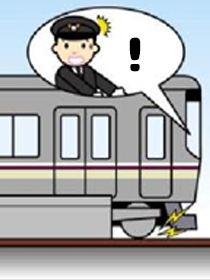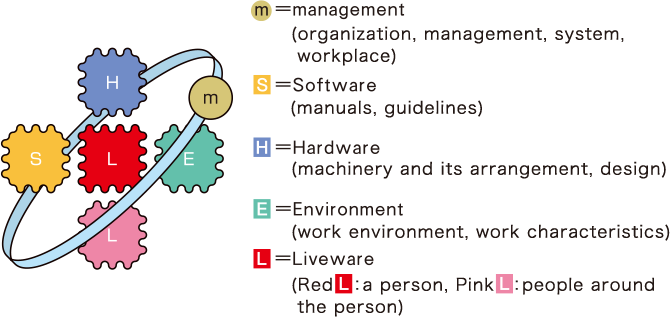About Us
Safety Research Institute

Human errors and human factors
In systems operated by many people, such as a railroad system, major accidents might be caused by errors made by one person and railroad operation could be disturbed for a long time. It is necessary to know the roles of people in the system as well as characteristics of human beings (human factors) and develop systems in which major problems are not caused by human errors. The Safety Research Institute deals with the following human factors based on the perspective of human errors and human factors.
What are “human errors”?
Human beings make various mistakes in daily life, such as spilling tea, forgetting to post a letter, and mixing up the time, among others. When such failures affect only personal matters, people just have to be more careful the next time. On the other hand, there is a need to fully examine the causes and take countermeasures when the spilt tea causes a computer system crash, or when all company business is affected because an important meeting time was mixed up. Why did the person spill the tea? Was the person in a hurry? Or, was the person’s desk in a mess?
Based on the above perspectives, the Safety Research Institute has defined “human errors” as “work requirements of the system and a work environment that is not consistent with human characteristics (human factors) and work that is different from the expectations from the system (deviant behavior),” (refer to “Characteristics of human beings”). Moreover, people not only make careless mistakes described above but also, they sometimes deviate from the rules, such as omitting the process of checking to save time or taking shortcuts because problems do not usually happen. These behaviors should also be recognized as human errors from the perspective of building a safe system. On the other hand, when deviating from the rules, behaviors that are not considered to have been performed because of inconsistency between human characteristics and requirements of the system, such as “disturbing work” or “intentional destruction,” are not regarded as human errors.
To decrease human errors, it is important to understand the characteristics of human beings and improve the work environment, without blaming people for making mistakes.

What are “human factors”?
Human beings have acquired wisdom and customs for living a safe life through the long process of evolution, which are very convenient for daily life. However, they sometimes cause failures and hurt others. Moreover, such characteristics are affected by various factors, including the environment around people, human relationships, social norms, and rules, among others.
In a system consisting of many people and devices, such as a railroad system, human characteristics affect the functions of the whole system in different ways. The Safety Research Institute refers to these factors and characteristics of human beings in the system as “human factors.”
When the work contents and the work environment are consistent with human characteristics, the possibility of human errors decreases. It is important to understand human factors for improving the safety of a system that consists of many people and devices.
The research area investigating human factors is sometimes called “Human Factors.”
When discussing human factors, not only the characteristics of human beings but also factors related to the whole system affecting human characteristics should be considered. The m-SHEL model is a model that systematically expresses the concept of human factors.

The above figure shows the image of the model: the person ![]() that made a human error is placed in the center. Related people
that made a human error is placed in the center. Related people ![]() , equipment to be operated
, equipment to be operated ![]() , rules to be obeyed
, rules to be obeyed ![]() , the work environment
, the work environment ![]() , and the management systems
, and the management systems ![]() are placed around the person. It expresses how a person is affected by various factors around him/her.
are placed around the person. It expresses how a person is affected by various factors around him/her.
Relationships between ![]() and
and ![]() are perceived as human relationships at the workplace or family problems of
are perceived as human relationships at the workplace or family problems of ![]() . The condition of
. The condition of ![]() improves when relationships with other factors in the system (
improves when relationships with other factors in the system (![]() ,
, ![]() ,
, ![]() , and
, and ![]() ) are good, whereas it declines when the relationships with other factors are bad. In addition to the effects of
) are good, whereas it declines when the relationships with other factors are bad. In addition to the effects of ![]() ,
, ![]() ,
, ![]() . and
. and ![]() , the management systems and organizational climate
, the management systems and organizational climate ![]() are also important.
are also important.
When discussing human factors, it should be noted that characteristics of a person differ depending on the occasions. In other words, individual characteristics that are observed in group situations and characteristics that are observed when operating devices and equipment could be different.



 Content Menu
Content Menu

 Search
Search HOME
HOME